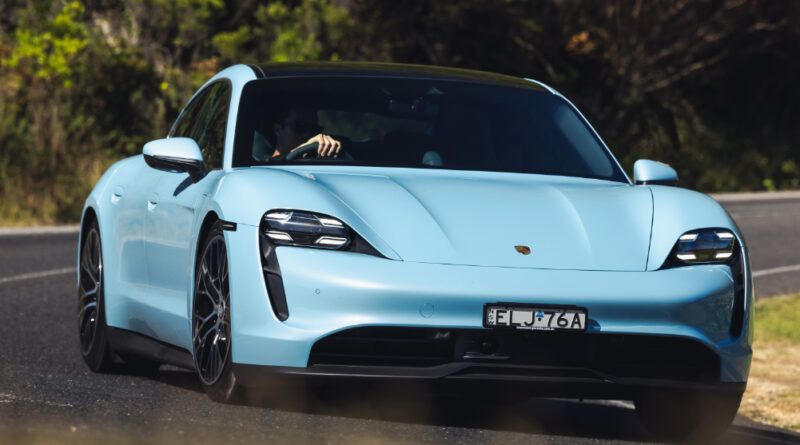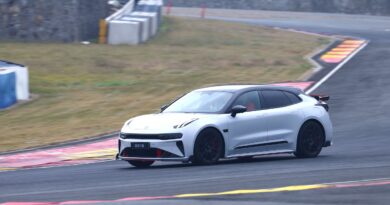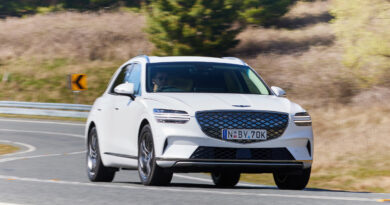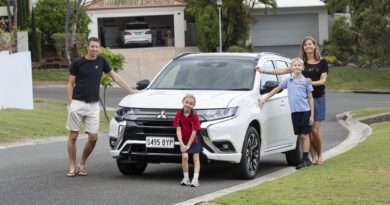Seven-day test: Living with the Porsche Taycan 4S
It can out-accelerate a 911 and carry more kilos than a Toyota LandCruiser. Seven days with Porsche’s first EV highlights its many talents.
The Taycan has been an instant sales success around the world – and in Australia.
And while it’s the Turbo and Turbo S versions grabbing the headlines, it’s the 4S that will likely tick enough boxes for many.
TRACK ATTACK: Porsche Taycan Turbo S takes on 911 Turbo on a race track
Faster accelerating than a bog-stock Porsche 911 but with four doors and the promise of never visiting a petrol station again, the $194,700 (plus on-road costs) price leader (for now) looks good on paper; a more affordable rear-drive Porsche Taycan also arrives soon.
But what’s it like to live with?
We bit the bullet for seven days with a Taycan 4S.
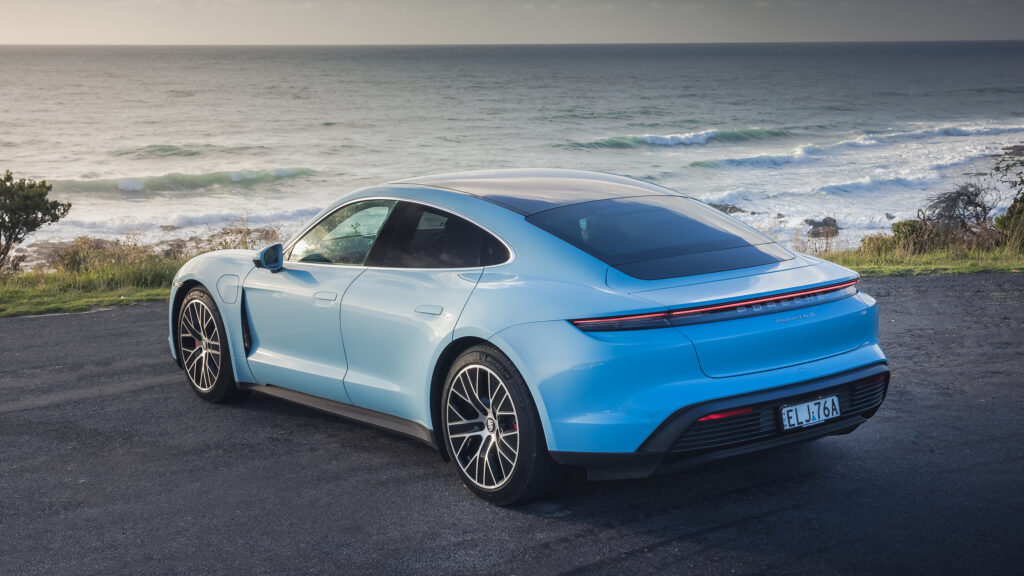
Day 1: Getting acquainted
The 4S doesn’t look any different to the more potent Taycans in the lineup… which is good.
Mine even had the 20-inch wheels from the Taycan Turbo. While I’m not convinced of having some of the spokes in the wheel blanked out – it’s done for aerodynamic efficiency – you only notice it close-up.
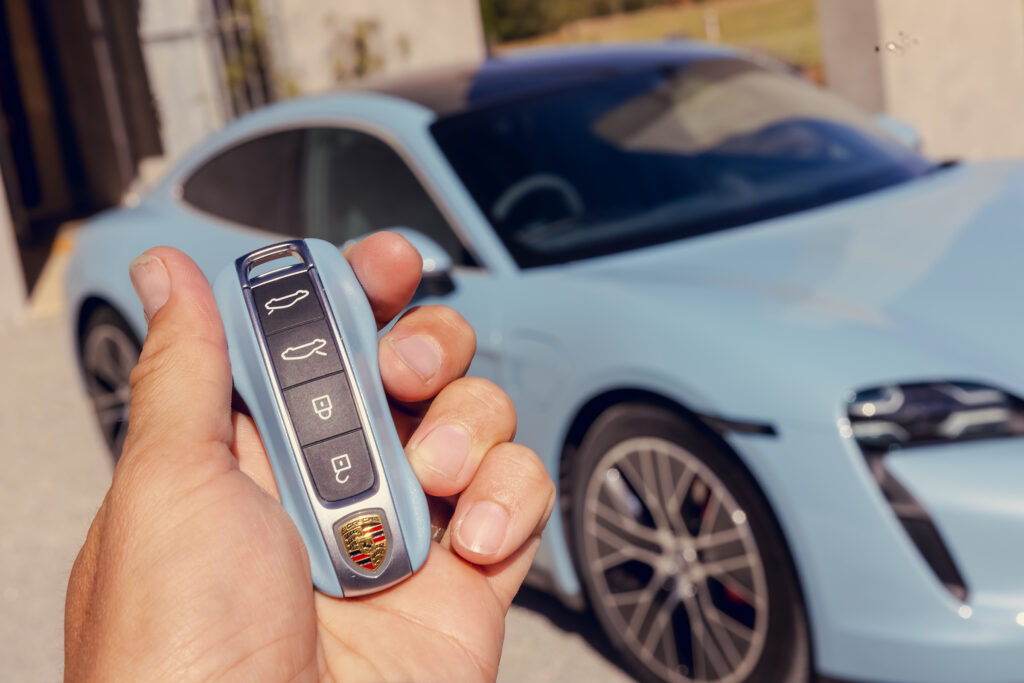
There was no shortage of options, including the panoramic glass roof ($3370), a fifth seat ($1100) and a key matched to the exterior colour of the car ($780).
The Performance Battery Plus is $11,590 but adds 14.2kWh of battery capacity, taking the overall capacity to 93.4kWh (of which 83.7kWh is usable).
One option that stings a tad is the “leather-free interior”, which replaces that real leather with a mix of fake suede and heavily textured cloth trim. It’s quality stuff and ticks the box of being eco-friendly, but at $8530 it’s a heck of a lot to replace a material that typically has a price premium attached to it.
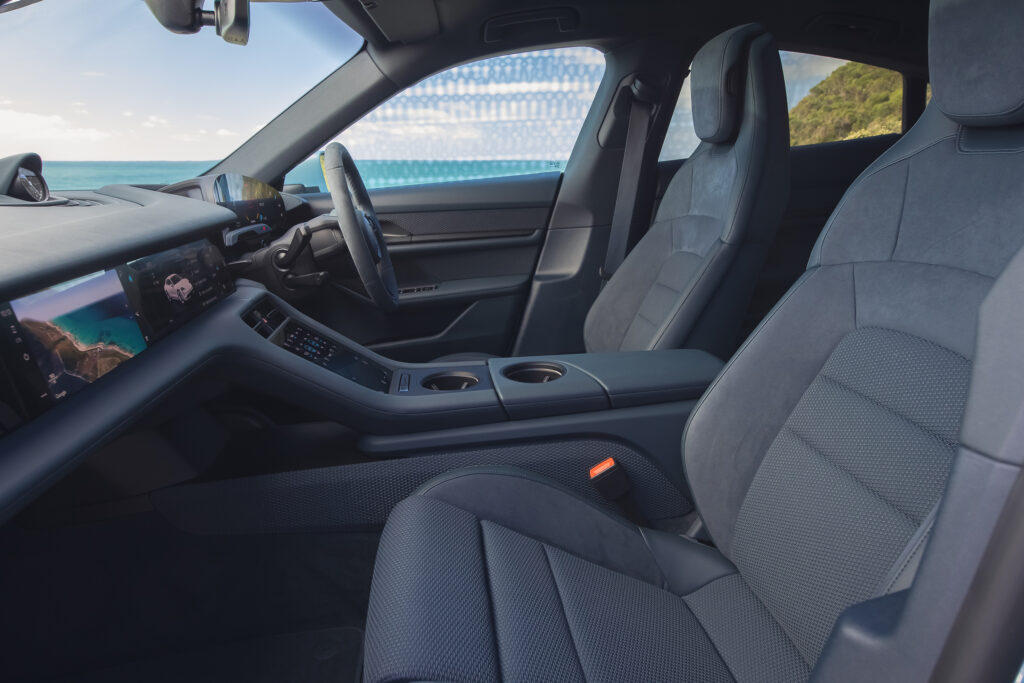
At least there are 13 exterior colours to choose from without upping the price, and while Frozen Blue Metallic is a winner for the camera, it wouldn’t be top of my list to park in the garage. Give me Carrara White Metallic any day!
Day 2: Stepping up the pace
The Taycan is very at home in the city and suburbs, but it’s built for pace, even in entry-level 4S guise.
So I aimed for the hills and some more challenging twists and curves.
Even in its most aggressive Sport Plus mode that engages the firmest suspension setting, the Taycan does a beautiful job of squashing bumps. Riding on air suspension it’s supple enough to deal with patchy country bitumen and speed humps with relative ease.
Yet there’s still a stealthy sharpness to the way it aims at a curve. Accurate and composed, it’s beautifully behaved in a corner.
Ultimately the 2.2 tonnes plays its part in teasing the cornering limits. But they’re limits beyond which many performance cars would have already given up.
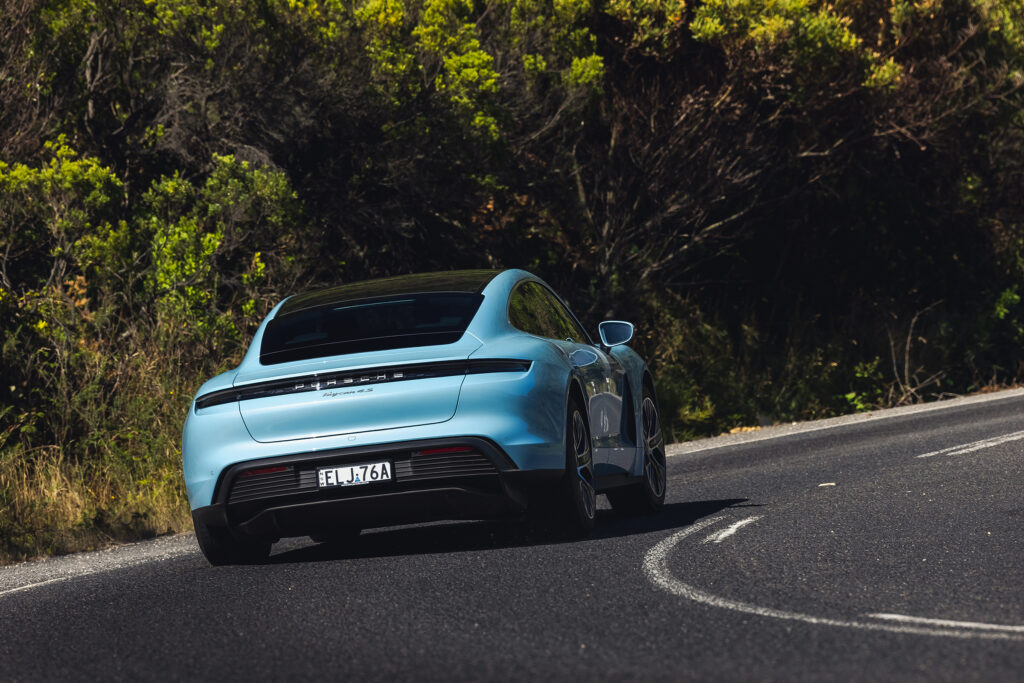
By far the most impressive part, though, is how the Taycan launches out of tight corners.
Sure, other all-wheel drive cars can punch hard out of tight corners – many Porsche 911s are high on that list – but the Taycan adds another dimension in the way it apportions power to the wheels. Even over mid-corner bumps there’s little let-up in the potent acceleration and pinpoint poise.
That Performance Battery Plus option also unleashes more power, although strap yourself in for this one because there are a few numbers here…
With the regular battery (just Performance Battery, minus the Plus) there’s 320kW, which jumps to 390kW once you engage the launch control system. Torque is a thoroughly handy 640Nm. That’s good enough to take you to 100km/h in 4.0 seconds, which is brisk but not ballistic.
Add the Plus to the battery and the standard power jumps to 360kW with a 420kW overboost peak when using launch control. Torque also increases to 650Nm.
The 0-100km/h time doesn’t change, with the additional performance instead unleashed at higher speeds. The 0-200km/h time for the Plus drops to 12.9 seconds, just four-tenths quicker.
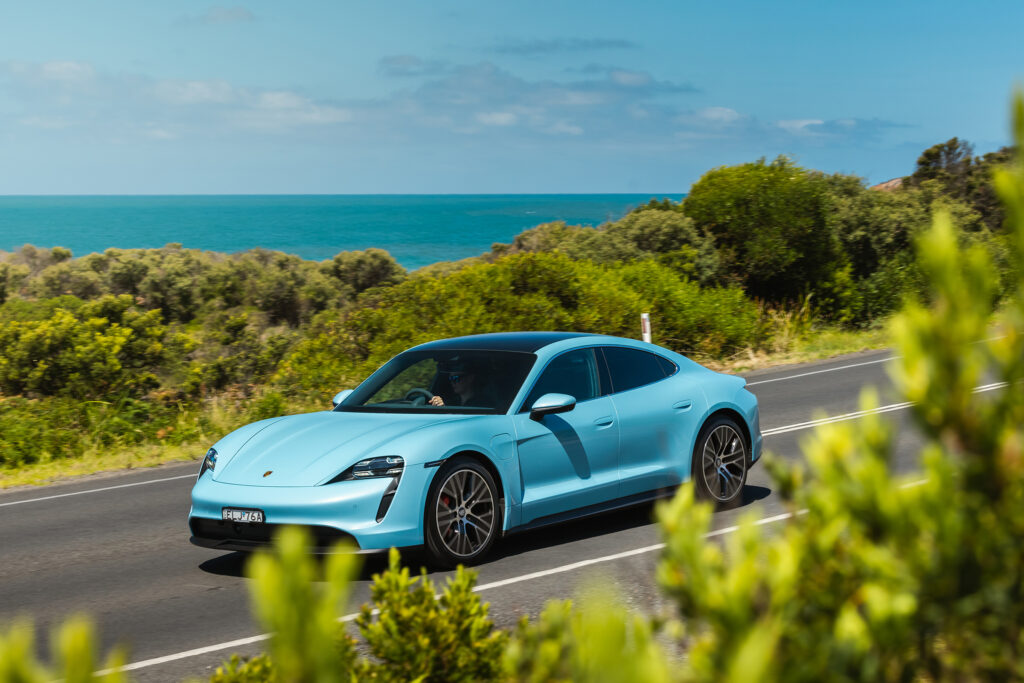
I was not initially sold on the fake motor sound, perhaps mainly because I know it’s not genuine. That said, the more time I spend with it the more I get used to it. It at least adds some character to the aural anonymity of electric motors.
Best to turn it off when making a phone call, though, because the people on the other end think you’re heading on an intergalactic adventure.
The best bit of a spirited thrash in an electric Porsche? It used just 31.5kWh/100km. If you were paying full freight for the electricity it’d still be less than $10 per 100km – most people would spend more fueling a small hatchback.
Day 3: The better half to work
Right from the start there was some acclimatisation with my better half and the Taycan. Like working out how to get it to move…
The gear selector is hidden behind the steering wheel, but once she was up to speed with the main controls it was all systems go.
Her run involves glacier-like traffic that works perfectly with the efficiency of an EV but isn’t ideal for delving into the 4.0-second 0-100km/h time.
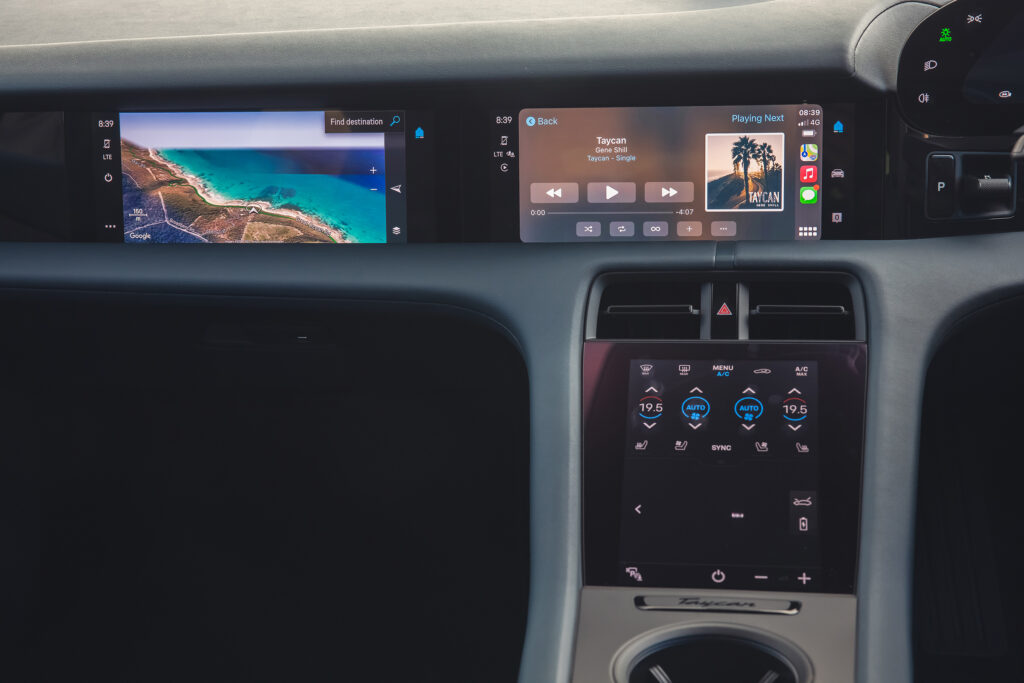
All went well, especially the comfort of the seats and suspension, both of which received a decent tick.
The evening run past our house to a kids band concert allowed her to better explore the performance of the Taycan, albeit within suburban limits.
The futuristic growling sound in Sport Plus added to theatre, although she eagerly noted “it doesn’t sound much like a Porsche”. True…
No issues with the acceleration, though, and even in entry-level 4S guise she concluded that instant pick-up was more than enough.
Job done, then.
Day 4: Suburban running
From an early start to a late night run our hump day with the Taycan 4S was diverse but mostly mundane.
The e-motors in this 4S seems to whine a bit on the overrun as it recharges while regenerative braking. It’s not super noisy, but it’s more pronounced than a Taycan Turbo I drove earlier.
But the regen does its job, the slower pace allowing me to better look at energy consumption.
Living down the bottom of a hill doesn’t help things when you first leave home, and with a blat (or two) on the way up that hill it’s easy to see electricity consumption into the 70-kilowatt-hour-per-100km bracket.
That’s about triple the claimed 27.0kWh per 100km, but fortunately it’s shortlived.
The downhill bit on the other side quickly brings it down to somewhere near its average. And even with some fun along the way it often slots below that claimed average.
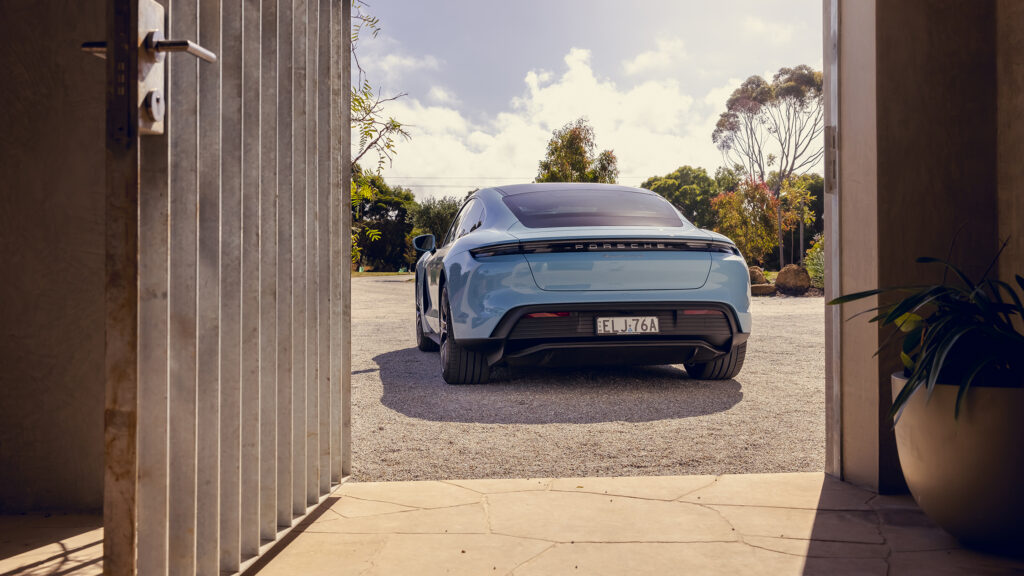
One thing I’m missing in the Taycan is a volume dial for the audio. While the Bose sound system cranks – you’ve got to dial the bass up to get it really thumping – you’re fiddling around with push buttons or the thumbwheel on the steering wheel. Give me a big circular dial any day!
As with all modern Porsches the headlights are brilliant, especially on high beam. And with the $4610 matrix LED system it means at higher speeds they stay blaring and block out other cars perfectly.
I’ve also been delving deeper into the specs sheet, which lists the weight of the 4S with the bigger battery as (gulp) 2220kg. Yet even with the lower payload necessitated by the heavier battery it can still carry plenty; the 660kg maximum load is 50kg up on a Toyota LandCruiser!
Day 5: Charging time
Until now our Taycan has been nowhere near a powerpoint or fast charger – and it’s done plenty of brisj take-offs and almost 300km.
The Taycan 4S can be had with a regular battery – Porsche calls it the Performance Battery – or the Performance Battery Plus. It’s that latter one our car was fitted with, extending the ’s EV range from a claimed 365km to 414km.
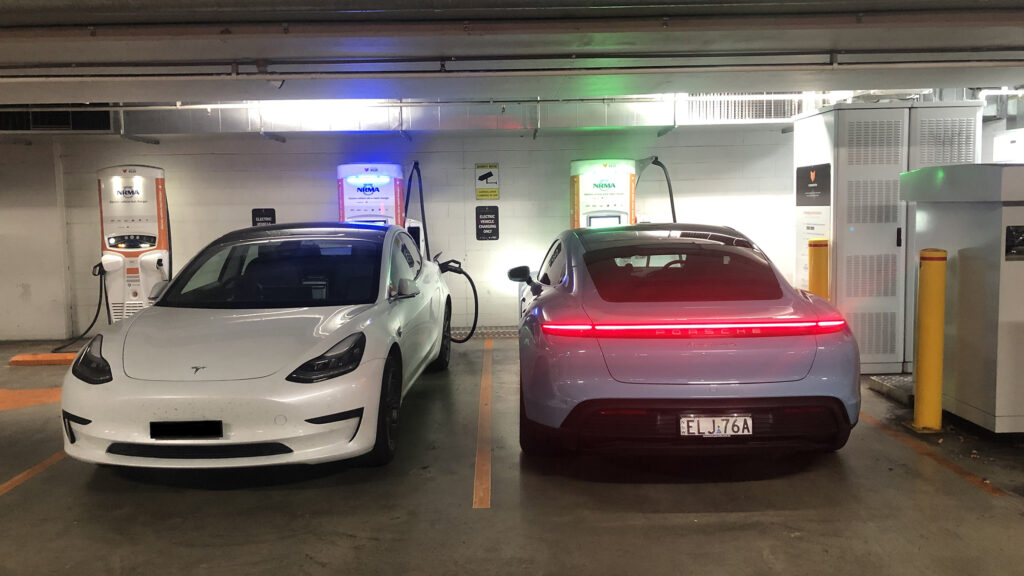
The Plus battery also increases the maximum charging power to 270kW, from a still-impressive 225kW. It’s that I wanted to test, so headed to one of the 350kW ultra-rapid chargers.
I plugged in with 27 percent charge still left in the battery and the car immediately started pulling in upwards of 140kW. It maintained that enthusiasm for 11 minutes and at one stage topped 157kW, which was its peak.
But at the 56 percent SOC mark it abruptly dropped to around 100-110kW, maintaining that up to 80 percent charge.
From early on in the charge there was plenty of heat being dissipated within the wheel arches of the Porsche. It was like a hair dryer blowing air onto the front tyres.
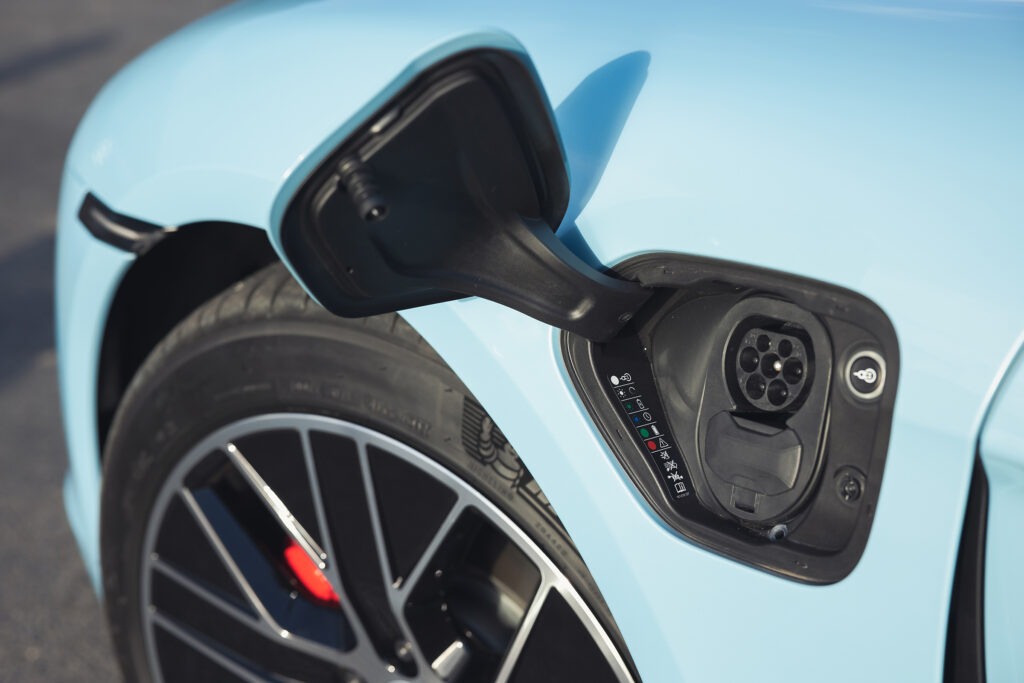
The charge level came off slightly towards the 90 percent SOC mark, but it held 35kW or more all the way up to 94 percent, at which point we hit the road again.
In all it consumed about 64kWh of electricity, which ordinarily would have cost $25.60 at this charger, but that fast charging is included in the price of the car for the first three years of ownership when using the Chargefox network.
Day 6: Kids sport and … monster trucks
Practicality is a big one with the Taycan. It’s not as large as a Panamera, but clever placement of the batteries – there’s a break in the battery pack to allow foot space for back seat occupants – makes them very kid friendly (and adult acceptable) when four-up.
The 4S dishes up ample performance for zipping through the suburbs during those crazy Saturday mornings when bleary-eyed parents get all agro over parking spots.
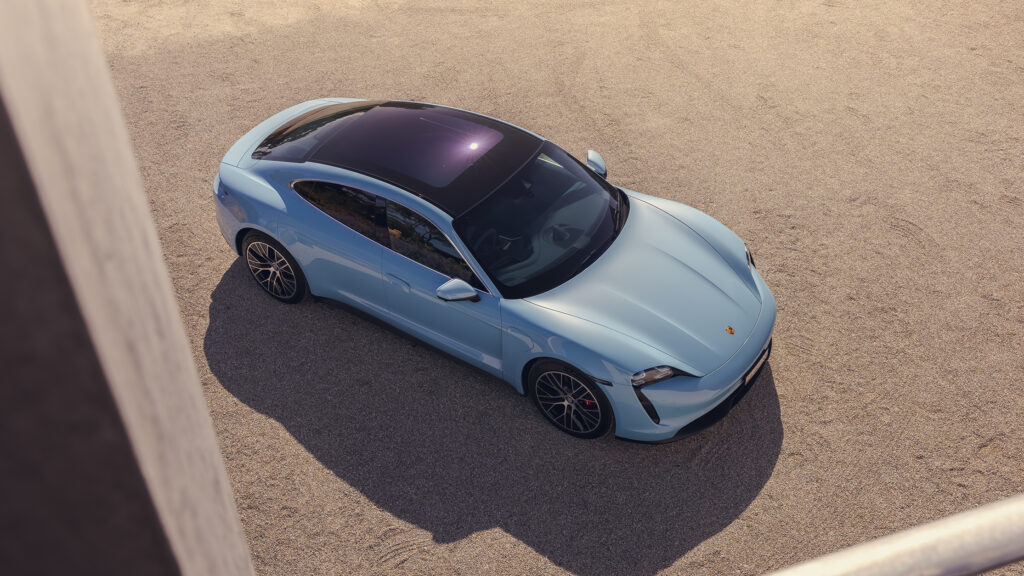
That evening we ventured to Sydney Olympic Park to check out Monster Truck Mania, which is the antithesis of electric motoring (fuel sucking V8s making big noise and crushing semi-wrecked cars before a demolition derby keeps the kids smiling). The sole EV charging space – an on-street unit that isn’t particularly well thought-out – was being dutifully ICE-blocked, but fortunately we didn’t need juice.
While there are parts of Australia where EVs seem to have decent cut-through, I’d be safe in saying the crowd attending Monster Truck Mania isn’t high on that list. While I didn’t do a comprehensive scan of the multiple carparks, it would be safe to assume we had the only electric Porsche there that night…
Day 7: Shopping, pack up and goodbye
Our final full day with the Taycan was spent doing drab around-town running and preparing for the last goodbye. There was some shopping – taking advantage of the (compact) load area under the bonnet, although the one at the back is far more useful.
It also gave time to reflect on how easy a car it is to live with.
Sure, it has performance and pace at its heart, but the Taycan does the everyday stuff remarkably well.
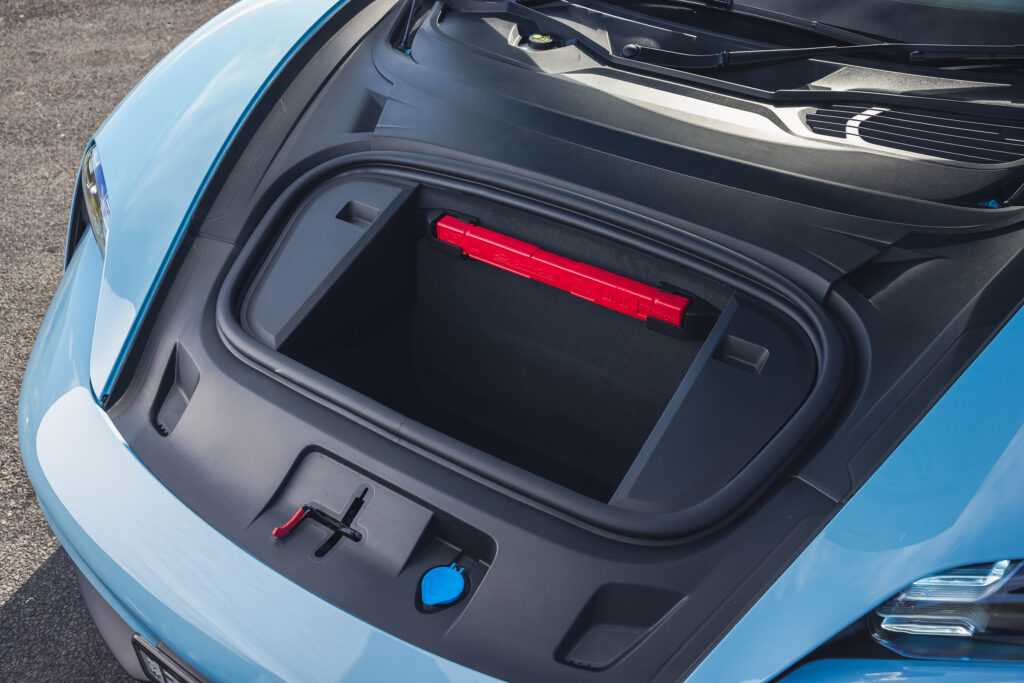
Efficient, too.
Claimed electricity consumption for the 4S with the big battery is 27kWh/100km and after 404km we easily beat that, averaging just 25.2kWh/100km.
Over more than 100 petrol-powered Porsche’s I’ve driven I can confidently say I’ve never beaten the claimed consumption figure. Not because they’re not capable of it but because you have to work harder to achieve it, which in some ways defeats the purpose of buying a Porsche.
The Taycan’s efficiency is helped by its ability to pump 265kW of power back into the battery pack during regenerative braking. It’s more than any EV on the market, and while you’ll never recuperate all the energy you just took out of the batteries in building the pace in the first place, it at least allows you to have some fun and not use too much energy.
That’s the point with my week with the 4S. There was no change in driving style and no hypermiling. It was all regular driving – including 100km/h cruising and plenty of launch control take-offs – yet I still beat the claimed consumption figure.

All of which reinforced my growing appreciation of this car. But what really nailed it was stepping into a V8-powered Porsche Cayenne GTS after I dropped off the Taycan.
The Cayenne is mighty impressive for an SUV – and it certainly sounds better than the Taycan. But it only took a few hundred metres for me to realise which one I’d splash my $200K on.
EV 7-day logbook: Porsche Taycan 4S
The car: Porsche Taycan 4S
Price: $194,700, plus on-road costs
Price as tested: $231,520, plus on-road costs
Main options fitted: Performance Plus Battery, leather-free interior, LED matrix headlights, panoramic sunroof, Sport Chrono package, 20-inch passenger display screen, electric sport sound, centre rear seat
Claimed EV consumption: 27.0kWh/100km
Actual EV consumption: 25.2kWh/100km
Kilometres travelled: 404km
Power/torque: 360kW (420kW with overboost)/650Nm

